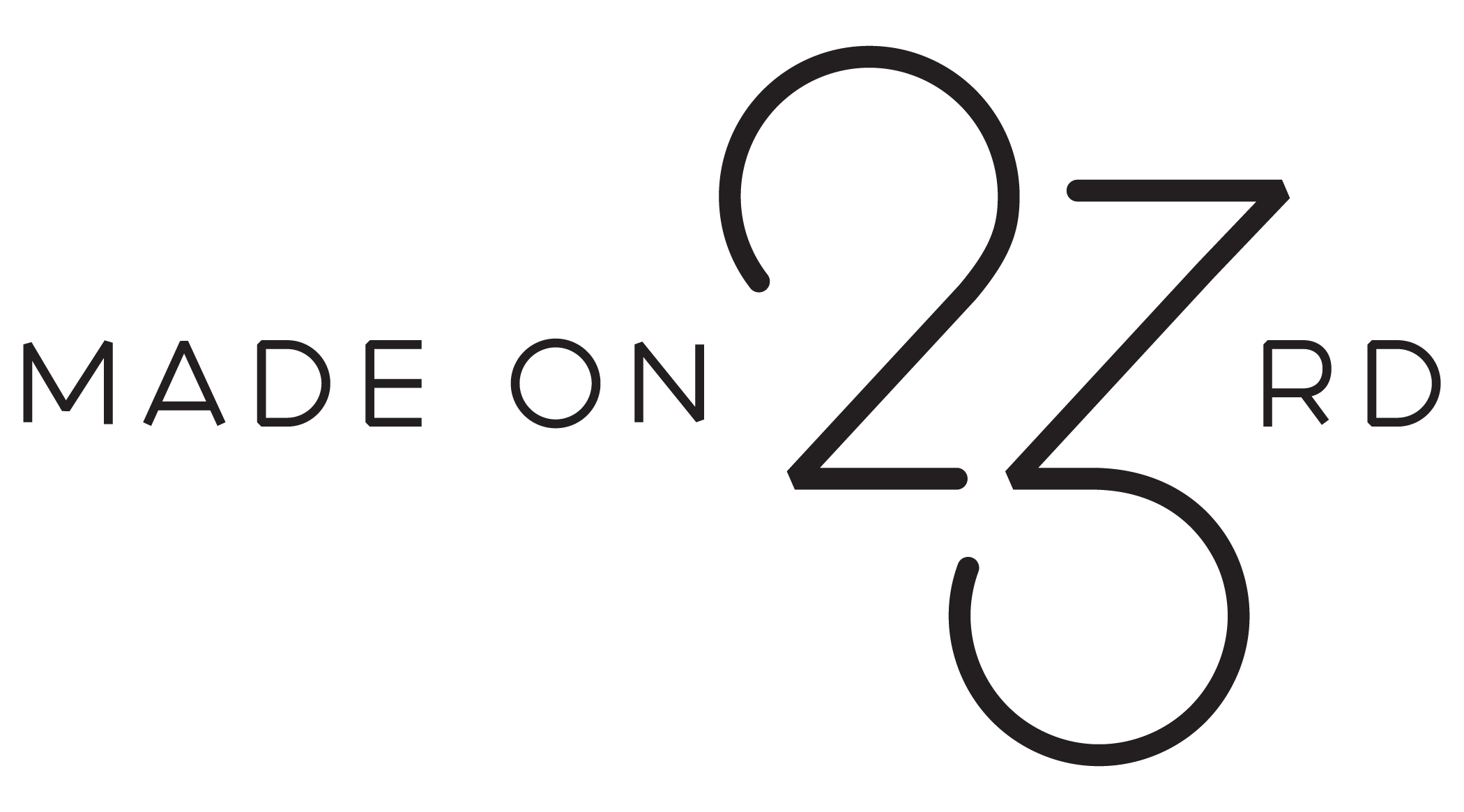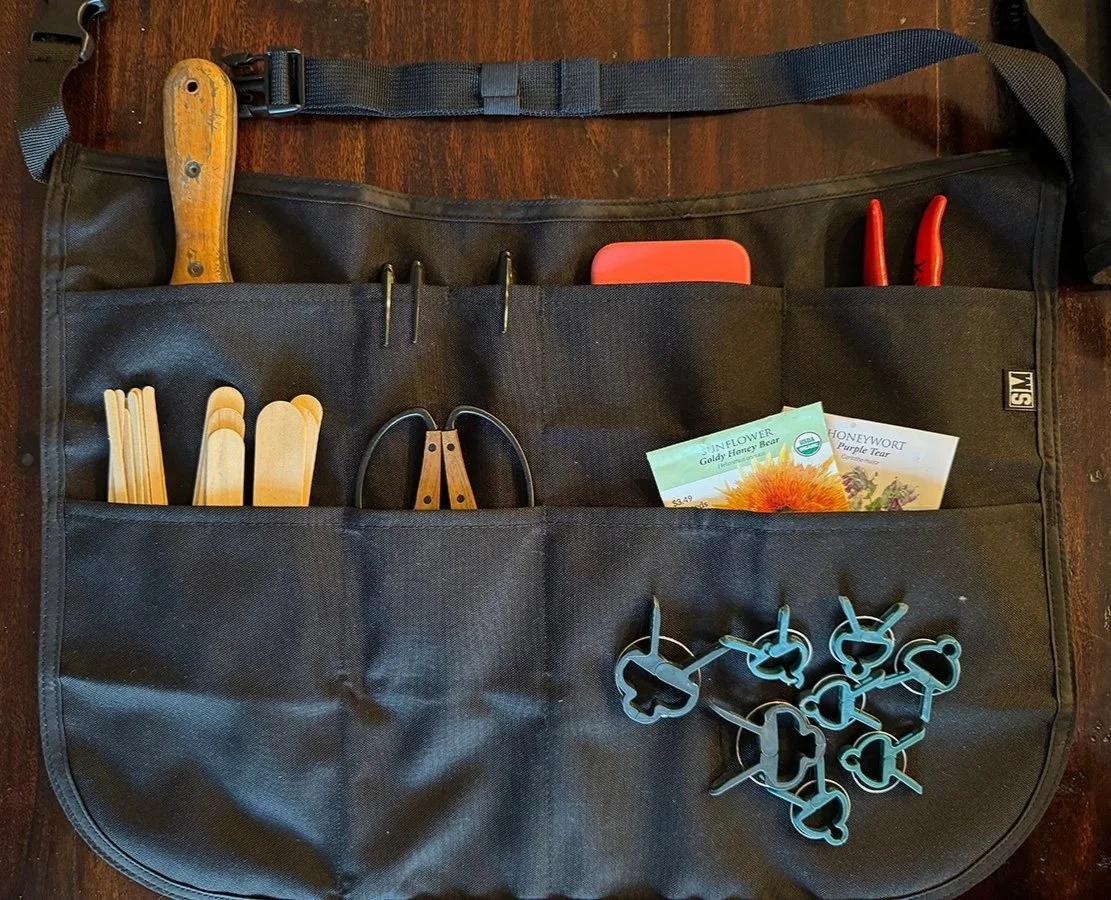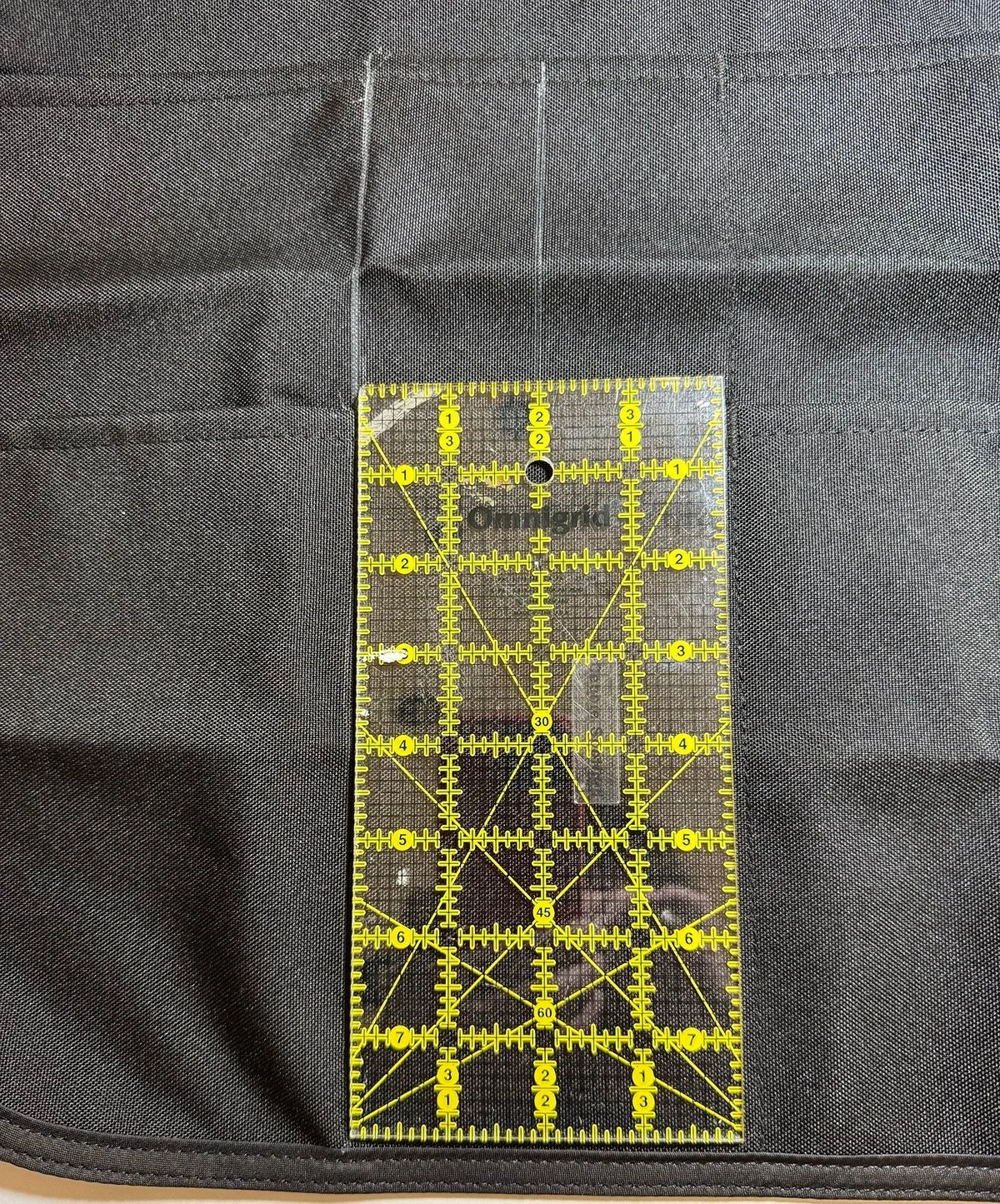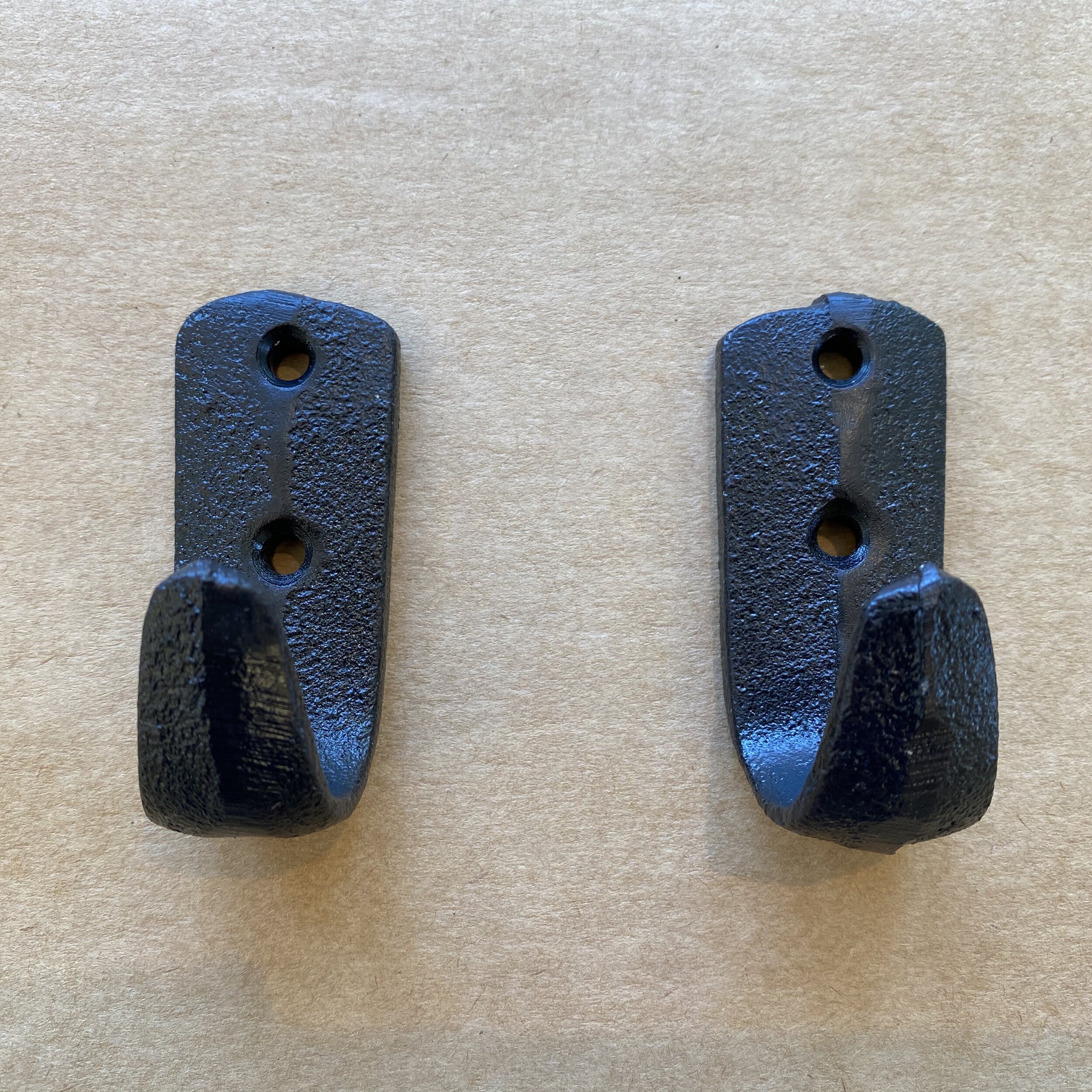How to Make a Hardworking Garden Apron - Super Easy!
Transform a Waiter’s Apron into a Customizable Garden Apron
Why this works:
Waiter’s aprons are typically durable, easy to wipe clean, and already waterproof…making them a perfect base for a garden apron with just a few thoughtful alterations.
I tested several different styles of pre-made aprons and chose this one because it has an adjustable waist clip instead of a tie, it is waterproof and washable, and it is made with heavy canvas fabric.
I ordered the apron online.
Photo from SupplyMade Store
You can absolutely use the apron as-is…but I wanted to customize it with a few extra pockets for the tools I reach for most. Here’s what you need.
Supplies
1 waterproof waiter’s apron
Scissors
Black Thread
Ruler (I used my 2 inch and 4 inch quilting rulers)
Erasable Pen
Sewing machine
Image from SupplyMade Store
This is the 5 pocket configuration as it arrives from the store.
My goal for this apron was to add three additional pockets:
A tall, narrow pocket for my Hori Hori knife
A slim pocket for permanent markers
A small pocket for my scissors
Before you begin, take a moment to consider the tools you use most often.
You can easily adjust the size, shape, and placement of the pockets to suit your unique needs.
Here’s how I modified the apron to include 3 extra pockets:
Instructions
Draw stitch lines
Draw stitch lines
Draw stitch lines on the apron with an erasable pen.
1) Measure 2 inches to the left of the center stitch line. Draw the line on top of the upper pocket and extend it under the lower pocket. This stitch line will go underneath the lower pocket.
2) Measure 4 inches to the left of the center stitch line. Draw a line on top of both the upper and lower pockets.
Reinforce the top edge of the pocket with backstitches
Stitch the 2 Inch Pocket
3) Pin or hold the lower pocket out of the way, then stitch the 2-inch pocket from top to bottom. This stitch line will run beneath the lower pocket.
At the beginning of the stitch, reinforce the top edge of the new pocket with several backstitches.
Sewing the new 2 inch pocket under the lower pocket
Stitch line stops at the bottom of the upper pocket
Sewing the 4 inch pocket
Stitching complete for both pockets


















